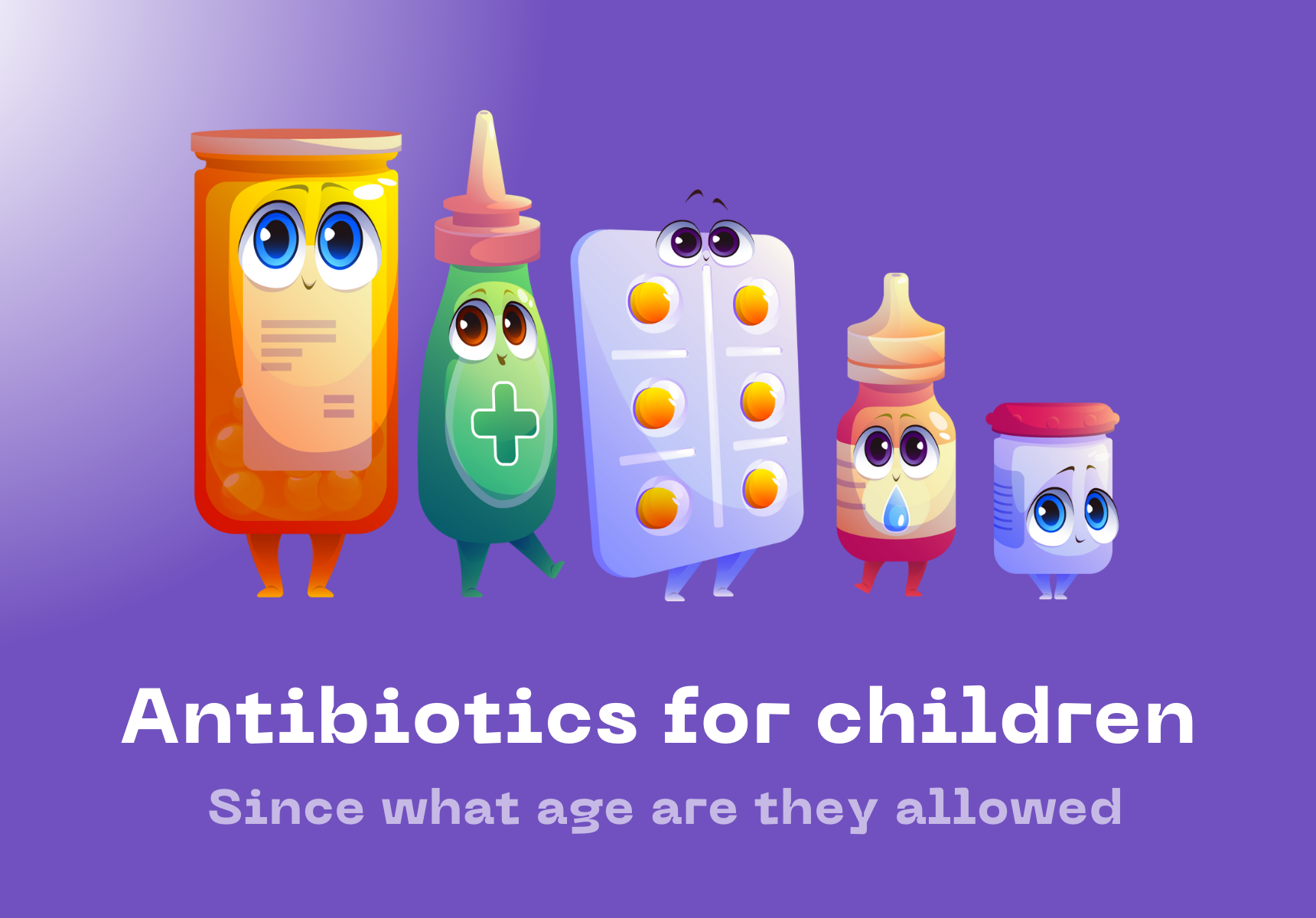Antibiotics for Children

Until the late 1970s, the use of antibiotics for children was treated very simply. Сhildren were considered to be a smaller model of adults and so they were prescribed standard antibiotics at a lower dosage. This approach was not only ineffective, but also dangerous for children.
30-40 years ago, antibiotics were of lower quality, had many side effects and could cause severe enough complications in children if taken incorrectly. Surely, today everything has changed and the quality of antibiotics has reached a new level. Also, most of the drugs have age restrictions.
Manufacturers directly indicate in the instructions whether a specific antibiotic is suitable for children or not. If some drug can be used for children, the age at which the drug can be taken is specified. It is very important to select an appropriate antibiotic for a child, since not only the treatment effectiveness, but also the future life and health of the child depends on it. So, you should consult a qualified doctor on this matter and not self-treat.
At what age can antibiotics be taken?
Antibiotics can be taken from the age of 6 months. In the case of a serious threat to life and health, infants are prescribed mild antibiotics in the form of syrups or suspensions. They are quickly absorbed in the gastrointestinal tract and the active substances get in the blood.
But some drugs can be taken only at a certain age.
For example, tetracyclines, a fairly effective group of antibacterial drugs, are prohibited for pregnant women and children under 8 years of age. These antibiotics can be harmful for the teeth of a child, destroy the tooth enamel and stain it in a dark color.
Also, it is not recommended to prescribe certain fluoroquinolones, for example, Cipro, for children under 16 years of age. Side effects may include disruption of bone formation, which can result in serious chronic diseases in the future. So, if you are going to buy Cipro and use it for children, give up this idea before the age of 16.
What antibiotics should you buy for a child?
The best antibiotic for children is the one that will be most effective and bioavailable for a specific disease. At the same time, it should be the least toxic and convenient for dosing and intake.
In a child, the effectiveness of antibiotic therapy is usually evaluated on the third day from the start of treatment.
In case of temperature normalization, reduction of corresponding clinical manifestations, improvement in general condition, and appearance of appetite, antibiotic treatment should be extended for 2–3 days after resolution of all symptoms of the disease.
These are antibiotics for children that are permitted for use in case of most infectious processes (pneumonia, otitis, laryngitis, gastrointestinal infections, etc.):
- Amoxicillin;
- Azithromycin;
- Cefalexin;
- Doxycycline (from the age of 8 and older).
All of these drugs are produced both in the form of tablets and suspensions for the youngest children.
At an early age, you should use Azithromycin (Zithromax).
- Zithromax dosage for children is 250 mg per day. The drug is taken for only 3 days and the effect appears soon enough.
- Amoxicillin is taken for up to 7 days. The drug dosage for children is 500 mg per day. Today, Amoxicillin is most often used in pediatrics and has many positive reviews. Amoxicillin side effects are quite rare and children tolerate it very well.
- Cefalexin dosage for children is 25-100 mg per 1 kg of body weight per day. The total dose is divided into 4 parts. This is not very convenient, but the effectiveness of this drug is not worse than that of Amoxicillin.
- Doxycycline dosage for children is 100 mg once or twice a day. This antibiotic cannot be taken under 8 years of age.



